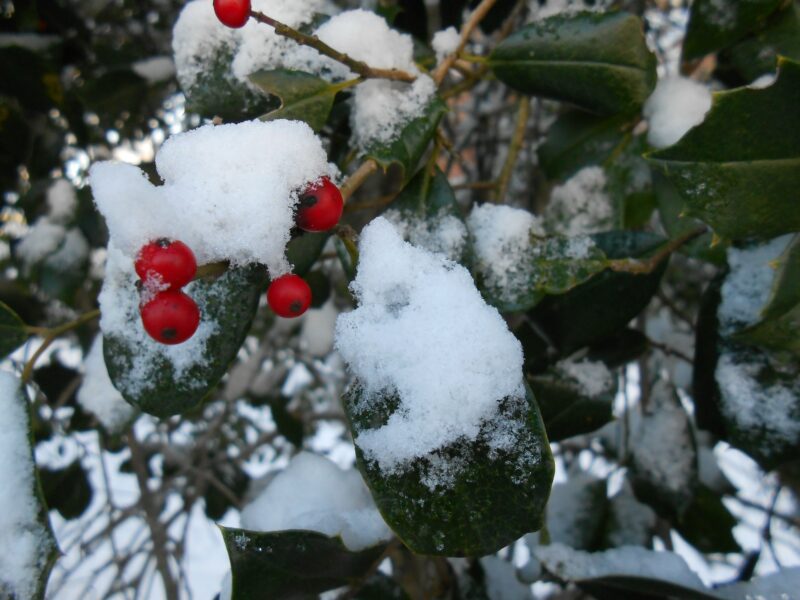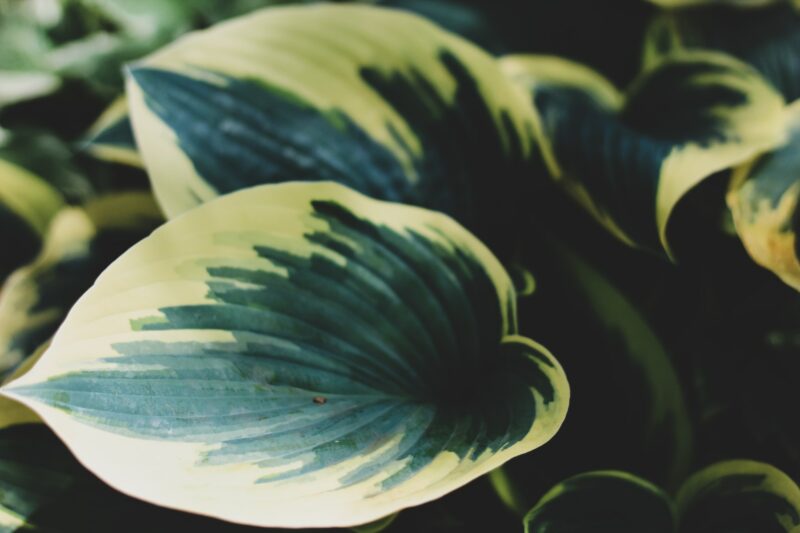
Winterberry holly (Ilex verticillata), also known as hollyberry, is a deciduous shrub that is native to the eastern part of North America. It is also a winter plant, and it brightens up a dreary landscape because this plant produces bright globose red berries that are able to withstand the weather. Winterberry is also associated with the Christmas holiday and is used to adorn evergreen decorations (e.g. wreaths) to add some color. It is also special because it is a dioecious plant, which means that there are male and female plants. This also means that male and female plants must be planted close to each other to ensure that pollination occurs in the female so that berries are produced.
Their leaves are dark green and elliptical. In the spring, the plant produces small white flowers with 5-8 petals which must be pollinated. Its normal height ranges from 3 to 15 feet tall, and it is slow-growing and has tends to form large thickets. In the winter, there is no foliage, as the winterberry is not an evergreen. However, while beautiful and striking, winterberry holly is toxic to people and some animals, such as dogs, cats, and horses.
Caring for winterberry holly
Winterberry holly prefers moist soil and well-drained areas, although it can also grow in poorly-drained areas. In soil that is more dry, winterberries can also grow, but will need frequent watering, as it requires around an inch of water every week. The pH of the soil is also preferably acidic, with adequate organic material. Fertilizer is only necessary when plant growth is slow. As for light exposure, this plant will do well in a location that receives full sun or partial shade. Around 6-8 hours daily is necessary for the plant to flower and bear fruit. This plant is also hardy in across a spectrum of temperatures and humidity and, if taken cared of, can live for a century.
When planting winterberry, it is best to take one male plant for around six to ten female shrubs, as this is the ratio with which the male plant can pollinate the female plant. The male plant must be around 40 to 50 feet from the female shrubs. This ratio and proximity is important to have flowers and for the plants to fruit the berries. The plants should have labels, so you should not have problems finding and buying plants from the nursery. Otherwise, you can observe the center of the flowers: male plants have pollen-bearing anthers, and females have a tiny green nub. It is also preferable to plant winterberry cultivars instead of the native species, as cultivars may have preferable traits. For example, the Cacapon cultivar has dark green and glossy leaves, and the Winter Gold cultivar has yellow berries.
Pruning is especially important in winterberries because the flowers and berries develop on new growth. As such, because flowers are in the summer and the fruits are in the winter, it is best to prune in early spring. However, be careful not to prune the new flower buds or new growth that has sprouted. If not done, the shrubs will grow tall and sucker. It is recommended to remove up to but no more than a third of the branches every year, prioritizing the pruning of the oldest branches.
Propagation is accomplished most efficiently by using stem cuttings, instead of using the seeds from the berries. Stem cuttings can be obtained from a mature female shrub and should be around three inches long. After exposure to a rooting hormone, the cuttings can be planted in its preferred soil. The roots should be grown in a month, and the plant should be ready for transplant into the garden at this point.
What if my winterberries don’t bloom?
There may be several factors affecting the blooming of winterberries. These include the ratio of male to female plants, as well as the proximity of the male plants to the female, fruit-bearing shrubs. The plants should also be the compatible ones of the same cultivars. It is also possible that the plants purchased from the nursery had already bloomed. It is also possible that the plants have not yet been established and may take 2-3 more years before bearing fruit. In addition, too much stress, such as dry soil or too much shade, may also inhibit growth and fruit. You should also think about an anima eating the berries or that perhaps the fruits are too small and are still green and not visible.
Have any more questions about winterberries? Give our team a call at Likas Landscaping, and we’ll be there to make your garden beautiful again.



